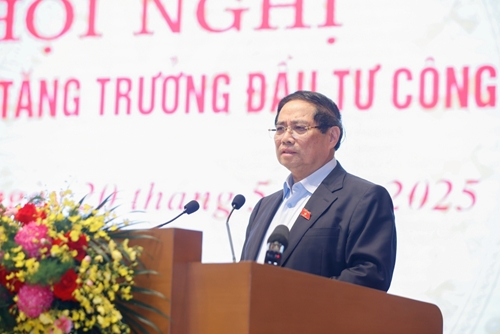The government leader underscored that public investment must lead and unlock private capital, but “a slow-moving locomotive cannot drive the train.”
While chairing an online national conference on boosting public investment as a key driver of economic growth in 2025 on May 20, PM Chinh stressed the need to revitalize traditional growth engines - investment, consumption, and exports, while accelerating new drivers such as science and technology, innovation, digital transformation, circular economy, and knowledge economy.
    |
 |
|
Prime Minister Pham Minh Chinh chairs an online national conference on boosting public investment as a key driver of economic growth in 2025. |
He called for a thorough review of legal and institutional bottlenecks and questioned why private enterprises are often faster in disbursing and implementing projects compared to state agencies. The PM stressed the importance of identifying causes of delays in public capital disbursement, clarifying responsibilities, and learning from effective leadership and implementation models across ministries and localities.
To enhance accountability, PM Chinh directed the design of consistent monitoring tools for disbursement performance and called for stronger efforts by administrations at all levels. He stressed the importance of clearly assigned roles, responsibilities, timelines, and outcomes, while urging state-owned groups and corporations to take the initiative in driving investment forward.
According to the Ministry of Finance, the National Assembly approved over 829 trillion VND (31.9 billion USD) in public investment capital for 2025, of which 826 trillion VND has been allocated to ministries and localities. As of April 30, nearly 818 trillion VND, about 99% of the planned figure, had been detailed and assigned to specific projects.
However, only over 128 trillion VND (15.56%) had been disbursed by the end of April. The central budget's disbursement reached 13.33%, local budgets 17.2%, and disbursement for the three national target programs stood at 21.4%.
Source: VNA